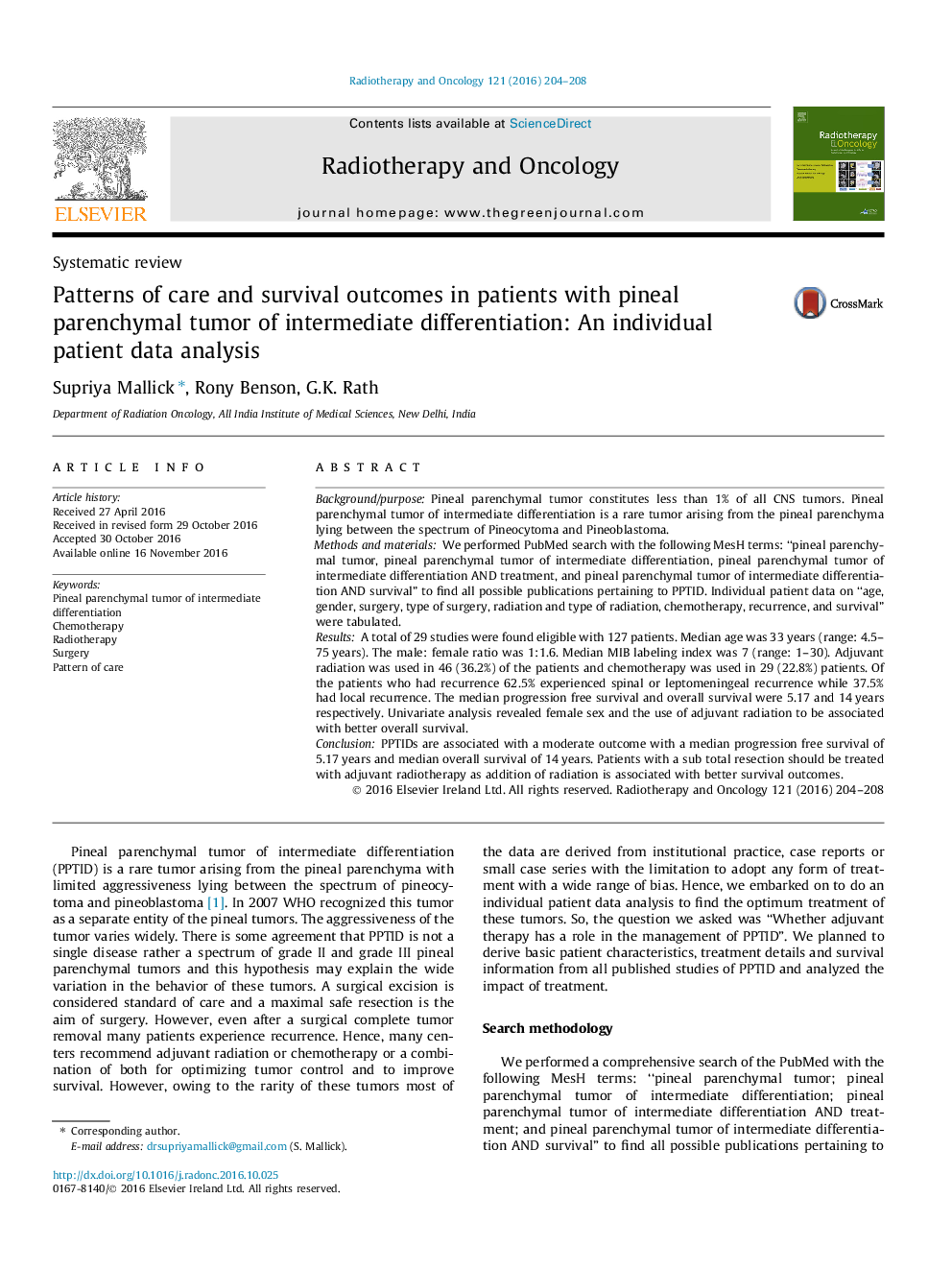| Article ID | Journal | Published Year | Pages | File Type |
|---|---|---|---|---|
| 5529955 | Radiotherapy and Oncology | 2016 | 5 Pages |
Background/purposePineal parenchymal tumor constitutes less than 1% of all CNS tumors. Pineal parenchymal tumor of intermediate differentiation is a rare tumor arising from the pineal parenchyma lying between the spectrum of Pineocytoma and Pineoblastoma.Methods and materialsWe performed PubMed search with the following MesH terms: “pineal parenchymal tumor, pineal parenchymal tumor of intermediate differentiation, pineal parenchymal tumor of intermediate differentiation AND treatment, and pineal parenchymal tumor of intermediate differentiation AND survival” to find all possible publications pertaining to PPTID. Individual patient data on “age, gender, surgery, type of surgery, radiation and type of radiation, chemotherapy, recurrence, and survival” were tabulated.ResultsA total of 29 studies were found eligible with 127 patients. Median age was 33Â years (range: 4.5-75Â years). The male: female ratio was 1:1.6. Median MIB labeling index was 7 (range: 1-30). Adjuvant radiation was used in 46 (36.2%) of the patients and chemotherapy was used in 29 (22.8%) patients. Of the patients who had recurrence 62.5% experienced spinal or leptomeningeal recurrence while 37.5% had local recurrence. The median progression free survival and overall survival were 5.17 and 14Â years respectively. Univariate analysis revealed female sex and the use of adjuvant radiation to be associated with better overall survival.ConclusionPPTIDs are associated with a moderate outcome with a median progression free survival of 5.17Â years and median overall survival of 14Â years. Patients with a sub total resection should be treated with adjuvant radiotherapy as addition of radiation is associated with better survival outcomes.
